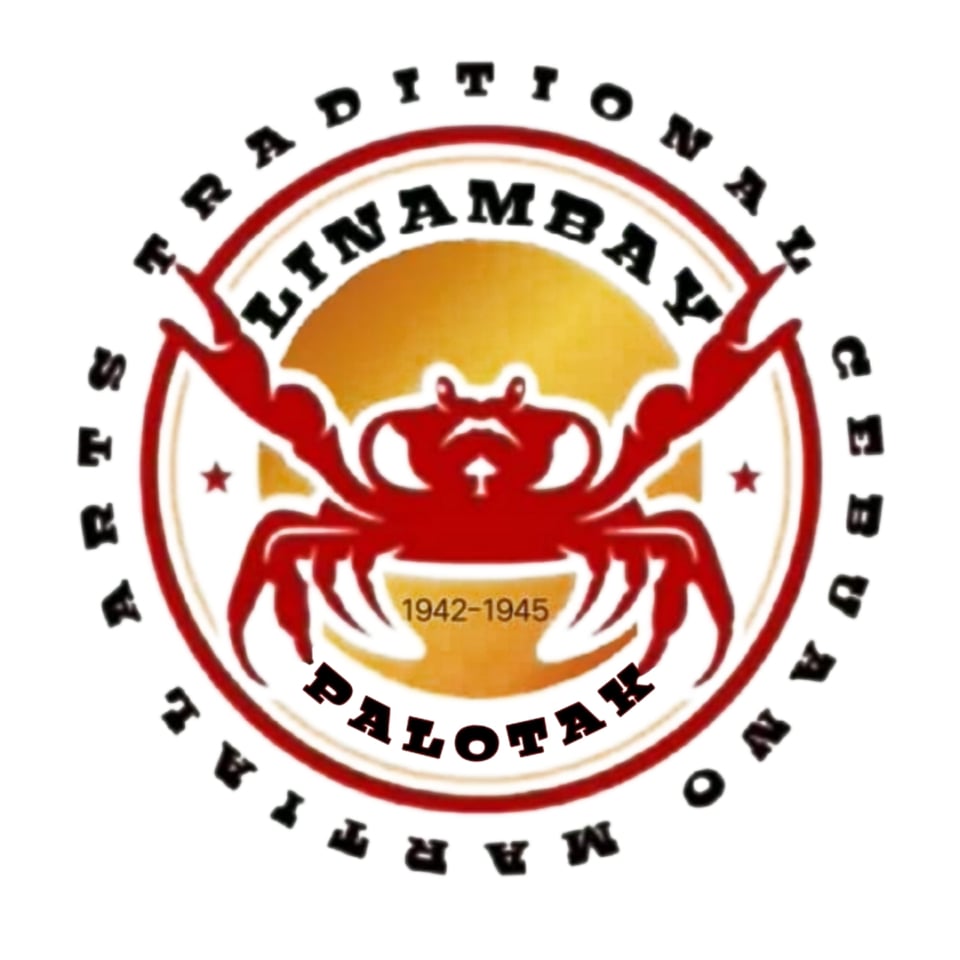

LINAMBAY PALOTAK ESKRIMA.
"Linambay" means crab. This style of Eskrima is appropriately characterised by sideways movements and a hard and punishing defence. It can be taught either as a stand alone system or as an integral module of the Dacayana Eskrima system.
Linambay Palotak Eskrima (L.P.E.) is a simple, direct and effective system. Because of this, it is quick to learn, but can be practiced for the rest of your life. We like to say that "It takes a day to learn, but a lifetime to master". L.P.E. uses the most pragmatic principles of the Filipino Martial Arts and is therefore ideal for either Eskrimadors who wish to learn another style or for experienced Martial Artists who are considering adding Eskrima to their repertoire. It is therefore our intention to run intensive one day courses to certify appropriately experienced Martial Artists as Linambay Palotak Eskrima practitioners.
HISTORY OF THE STYLE.
Our GrandMaster, Alberto Dacayana Jr. (Jun) first trained in Eskrima as an 8 year old child when he learnt it directly from his maternal Grandfather,
Dalmacio "Insyong" Laseras Alicaway.
GrandMaster Alicaway was born in 1914 in the city of San Fernando, Cebu and joined the Anderson Fil-American Guerillas (also known as the Police Bantok battalion) from 11th July 1942 until he was honourably discharged on 27th September 1945 (during World War 2). It was during this time that he trained in the Crab style of Eskrima and used it extensively in direct combat with the Japanese occupiers of the Philippines.
However, despite having mastered this practical method of Eskrima and having pressure tested it in real combat, GM Alicaway was reluctant to teach publicly. As one of the very few remaining people who mastered the Crab style, "Insyong" would reminisce to his family about how he used it to hunt down the Japanese invaders. Fortunately for us, he did pass on his knowledge to his Grandson, who had shown great ambition, courage, interest and determination to learn about Eskrima from his Grandfather.
GM Dacayana has decided it is now time to introduce this traditional, practical and classical style of Eskrima to those of good character who have the sincere commitment and desire to learn. GM Alicaway died in 1982 and now GM Dacayana hopes that this will preserve his Grandfathers tactics and strategy as well as honour his legacy and keep his memory alive.
WEAPONS.
The weapons that we train with in L.P.E. are a reflection of and a tribute to the life of GM Alicaway. Because the system is simple, direct and follows good principles, it is relatively easy to adapt to a wide range of weapons. However, it is important to realise that every tool is different and it is therefore as important to understand those differences as it is to understand the similarities.
Initially, GM Alicaway trained with a number of western weapons as part of the Fil-American Guerillas. These included bayonets, combat knives, deck knives and various lengths of Bowie knives. However, these guerillas were also famous for the use of various types of Filipino Bolos, Barongs and Sundangs. Whilst those weapons are usually around 24 inches, the logo of the Anderson Fil-American shows a Pinuti, which is usually a very sharp, thinner, longer weapon (up to 32 or 34 inches).
GM Alicaway also became a manananggot worker and as such used a sanggot (sickle) as his main tool, to harvest coconuts and coconut palms (for making coconut wine). The wooden weapons used in this style are derived from the coconut tree. Apart from the obvious bahi wood sticks, which is a very hard wood taken from the heart of the coconut tree (we can use rattan because it is more readily available), GM Alicaway would cut the stems of coconut palm leaves (Palwa) into flat paddles. These are called Palo-Palo. They were widely used as a tool to beat laundry to ensure total cleanliness. The Palotak is a special wooden stick uniquely developed for the Linambay style. It is usually made at either 24 inches to represent a Bolo or else less than 12 inches to represent a knife. Because it is flat, it replicates the size and shape of a bladed weapon better than the round shape of a cane. This is particularly useful for training the L.P.E. practitioner in blade awareness and alignment. However, it is also important to remember that it is very destructive in its own right and not just a training weapon. It is brutal with the ability to break bone with one strike and easily end a fight.
TRAINING.
It is our intention to preserve, promote and propagate the Linambay Palotak Eskrima system in order to honour the legacy of the great Eskrimador, GM Dalmacio Alicaway. However, we need the help of you and your students to do so. If you are an experienced Martial Artist and would like to learn and become a certified practitioner of this fascinating and pragmatic style of Eskrima, please contact the Dacayana Eskrima organisation to find out about attending (or hosting) the next seminar.